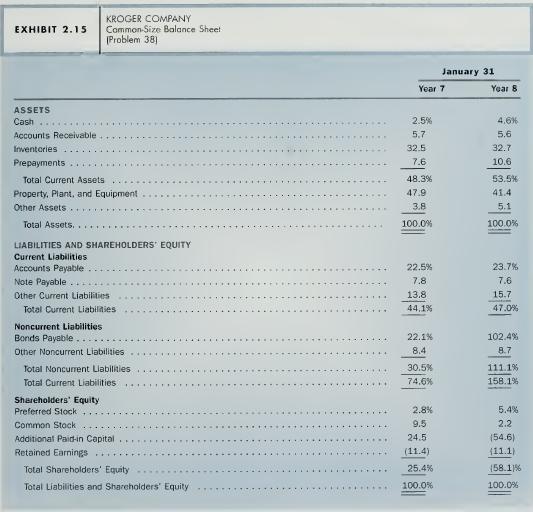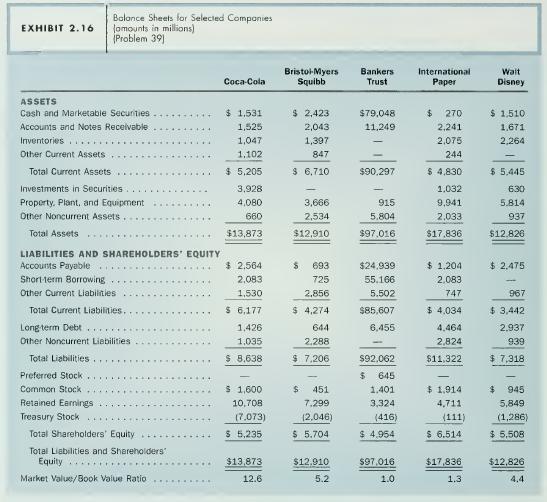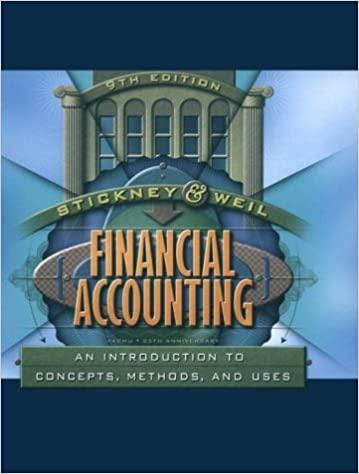Market value versus book value of shareholders' equity. Firms prepare their bal- ance sheets using GAAP for
Question:
Market value versus book value of shareholders' equity. Firms prepare their bal- ance sheets using GAAP for the recognition and valuation of assets and liabilities. Accountants refer to the total common shareholders' equity appearing on the balance sheet as the book value of shareholders' equity. The market value of shareholders' eq- uity equals the number of shares of common stock outstanding times the market price per share. Financial analysts frequently examine the ratio of the market value of

shareholders' equity to the book value of shareholders' equity, referred to as the market-to-book ratio, in assessing current market prices. Recent theoretical and em- pirical research suggests that the size of the market-to-book ratio is related to (1) at lirm's ability to generate higher rates of profitability than its competitors. (2) its rate of growth, and (3) its use of GAAP in measuring assets and liabilities, which net to the book value of shareholders' equity. Exhibit 2.16 presents balance sheet information for five firms at the end of a re- cent year. It also shows their market-to-book ratios. These ratios differ from 1.0 in part because the rates of profitability and growth of these five firms differ from

those of their competitors. This problem does not provide you with sufficient infor- mation to assess the impact of these two factors on the market-to-book ratio. The ratios also differ from 1.0 because of the use of GAAP for assets and liabilities. which this chapter discussed. Identify the GAAP that most likely explain the market-to-book ratios for each of the six firms (that is, identify which accounting principles cause the book values of assets and liabilities to differ from the market value of shareholders' equity). Additional information regarding the five companies follows: (1) Coca-Cola (Coke): Coke markets soft drinks worldwide. It has grown primarily by internal expansion rather than by acquiring other soft-drink firms. Coke maintains less than 50 percent ownership in a large number of its bottlers.
(2) Bristol-Myers Squibb (Bristol): Bristol generates approximately 75 percent of its revenues from prescription drugs and medical devices and 25 percent from nonprescription health products, toiletries, and beauty aids.
(3) Bankers Trust (Bankers): Bankers obtains funds primarily from depositors (reported on the Accounts Payable line in Exhibit 2.16) and invests them in short-term liquid assets or lends them to businesses and consumers. It also engages in investment activities on its own account.
(4) International Paper (IP): IP has the largest holdings of forest lands of any nongovernmental entity in the United States. It processes timber into wood products for the construction industry and processes pulp from the timber into various types of commodity and specialty papers.
(5) Walt Disney (Disney): Disney produces motion picture films and operates theme parks.
Step by Step Answer:

Financial Accounting An Introduction To Concepts Methods And Uses
ISBN: 9780030259623
9th Edition
Authors: Clyde P. Stickney, Roman L. Weil





